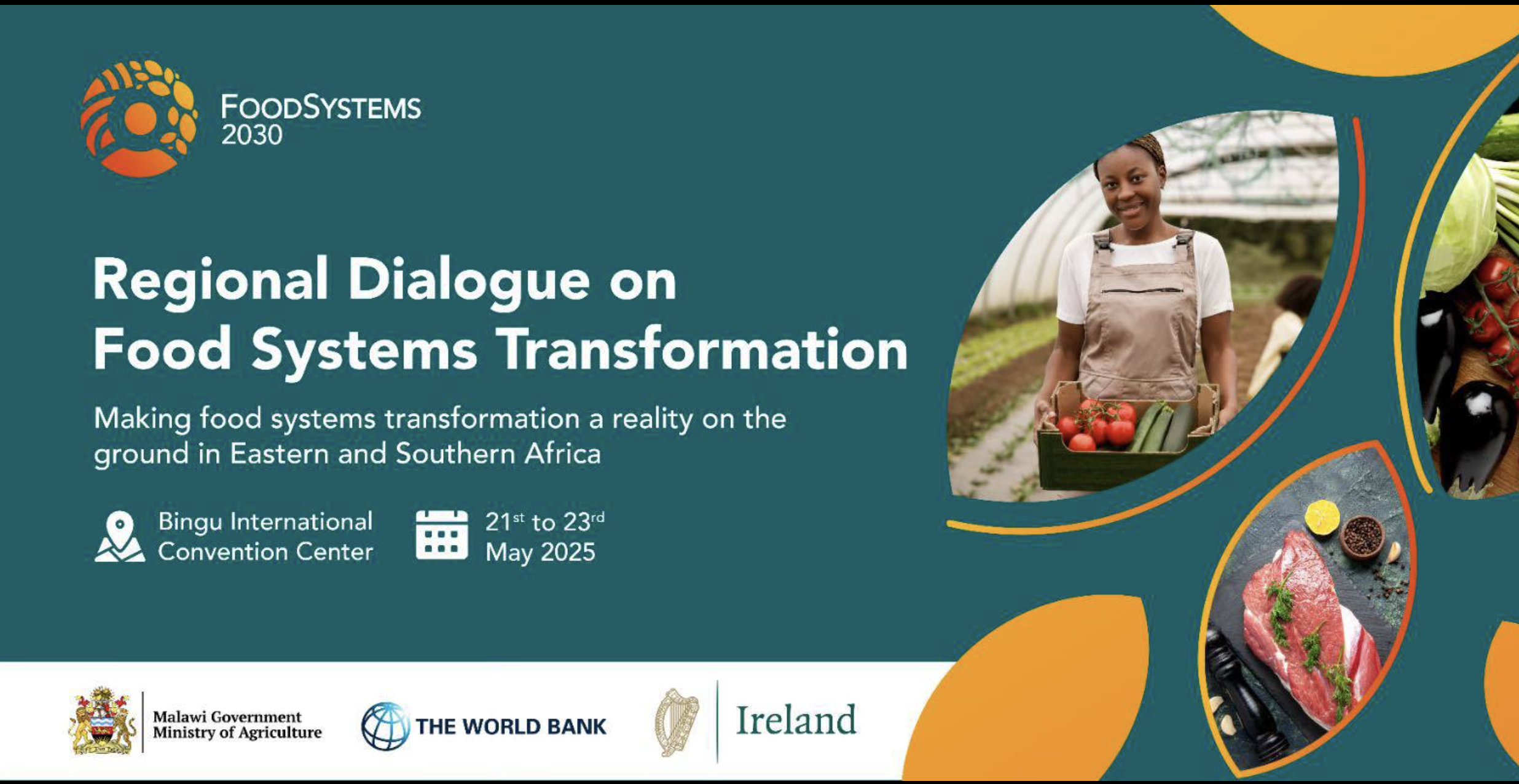
By Special Correspondent | Lilongwe, Malawi — May 21, 2025
In a region where climate shocks and rising food insecurity continue to test the resilience of farmers, Kenya is charting a bold path anchored in innovation, technology, and community-led action. During the Regional Dialogue on Food Systems Transformation in Lilongwe, Malawi, Priscilla Muthoni, an agricultural extension specialist from Kenya, delivered a compelling account of how Climate-Smart Agriculture (CSA) technologies and innovations are not only transforming farming practices but also empowering marginalized groups—especially women and youth.
Her presentation, titled “Impacts of CSA Technologies, Innovations, and Management Practices (TIMPs) in Kenya,” was a vibrant blend of practical field results, digital success stories, and evidence of real impact on farmer livelihoods.
“Food systems transformation must be anchored in the realities of farmers,” Priscilla said. “And what we’ve seen in Kenya is that when you invest in the right tools, technologies, and people, the change is immediate, measurable, and inclusive.”
A Nation-Wide Movement: Technologies That Work for the People
At the heart of Kenya’s success story is its expansive portfolio of CSA Technologies, Innovations, and Management Practices (TIMPs)—developed and deployed across different agro-ecological zones to meet diverse farming needs.
Priscilla highlighted a range of interventions categorized into:
- Improved crop varieties and postharvest technologies
- Improved livestock breeds and production techniques
- Suitability mapping and digital agro-advisories
- Mobile-based tools offering personalized guidance
She explained how over 65 mobile applications are now actively supporting smallholders with weather alerts, planting schedules, and crop/livestock management tools.
“These tools are not just nice-to-haves. For a smallholder with two acres of land, getting accurate weather data or market prices on a phone can change the course of an entire season,” she emphasized.
Transforming Livelihoods: Women and Youth at the Forefront
What made Kenya’s case particularly powerful was the human face behind the statistics. Priscilla shared vivid stories of women-led and youth-led groups who have leveraged CSA to unlock both economic and social gains.
One example was the Kamar Women’s Group, where members now use mechanized threshers for sorghum, significantly reducing labor time and post-harvest losses. Similarly, the Tangi Mabati Women’s Group in West Asembo, Siaya County, embraced drought-tolerant sorghum varieties to counter erratic rainfall and poor soils. As a result, food availability and incomes have improved dramatically.
“These women are no longer waiting for handouts,” Priscilla said. “They are organized, trained, and now leading the production of climate-resilient crops in their communities.”
Youth groups are also thriving. She highlighted the Naibor Vision Youth Group in Laikipia County, which successfully breeds Dorper sheep—a hardy and fast-growing variety. Their livestock venture has increased community income, boosted nutrition, and encouraged more young people to return to farming.
The Numbers Behind the Impact: Proof of Concept
Kenya’s results, as shared by Priscilla, speak volumes:
- 146% increase in egg production through adoption of improved chicken breeds and feeding systems
- 100% increase in honey yields, especially in arid and semi-arid areas
- 60% increase in milk production from improved dairy breeds and feeding techniques
- 33% increase in chicken meat production
“These are not projections. These are real figures from real communities,” she emphasized. “And they show that CSA is not just climate-resilient, but also economically empowering.”
What Makes It Work: A Constellation of Support Systems
Kenya’s CSA success is not accidental. Priscilla credited the following enabling factors:
- Strong extension systems: Farmers have regular access to skilled advisors and training modules tailored to their realities.
- Digital infrastructure: Widespread mobile penetration allows easy access to advisory services, climate forecasts, and mobile money.
- Policy support: The government has aligned national agricultural policies with CSA principles, especially in arid regions.
- Inclusive targeting: Programs prioritize women, youth, and vulnerable households, ensuring equity in access to resources.
“Transformation only becomes real when the systems around the farmer are working too,” Priscilla noted. “It’s about more than just seed and fertilizer—it’s about information, markets, and belonging.”
Lessons for the Region: Scaling What Works
As the applause concluded, the conversation quickly turned to scale: How can other African countries replicate Kenya’s community-based and tech-enabled model?
Priscilla outlined several recommendations:
- Customize TIMPs to local ecological conditions and farmer preferences.
- Invest in digital extension tools that empower farmers to make decisions in real time.
- Promote group-based models (women’s groups, youth collectives) for knowledge sharing and peer accountability.
- Build inclusive value chains that connect climate-smart production to climate-smart markets.
She also called on development partners and regional blocs to invest in cross-border knowledge exchange, noting that CSA adoption in one country can generate regional spillovers—especially in shared ecosystems like the Lake Victoria Basin or the Horn of Africa.
Final Thought: A People-First Revolution
As she closed, Priscilla left the audience with a powerful thought: “This is not just a technological revolution. It’s a people-first revolution.”
Her presentation demonstrated that Africa’s transformation does not have to wait for foreign breakthroughs or mega infrastructure. It can begin—right now—in the hands of a woman threshing sorghum, a youth breeding sheep, or a smallholder farmer checking the weather on a basic phone.
And in Kenya, it already has.

One thought on “Kenya’s Climate-Smart Innovations Put Smallholders at the Center of Food Systems Transformation”
Comments are closed.